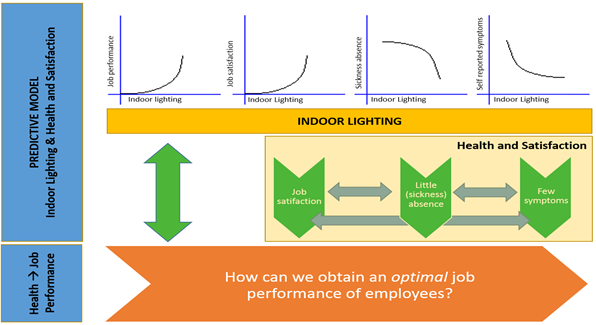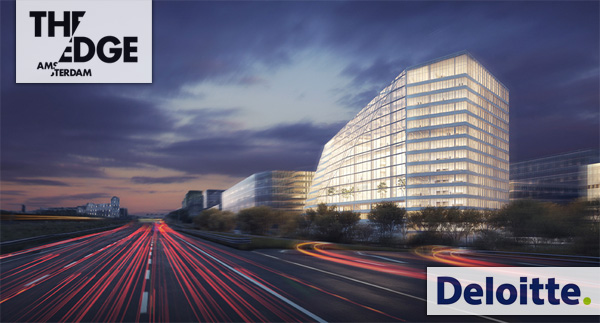Office Lighting in relation to employees’ health and satisfaction: Job performance in open-plan offfices
Name of researcher: Juliëtte van Duijnhoven
Supervisors: prof. dr. ir. H.S.M. Kort, Prof. Dr.-Ing. habil. A.L.P. Rosemann, dr. ir. M.B.C. Aries
Chair research belongs to: Building Lighting
Strategic area: Health
Envisioned research period: 2015-2019

Background
In the Netherlands, 33% of the causes for sickness absence from employees are based on psychological reasons (Arboned, 2015). Psychological reasons are, for example, job stress, a burn-out, or depressions. Psychological disorders are already being treated by light therapy.
Numerous studies explained the effect of lighting on health and well-being. In addition to those effects, there is also an indication for the correlation between office lighting and job performance, either a direct or indirect link. Veitch et al (2008) demonstrated a linked mechanisms map showing all discovered links between luminous conditions and research results such as visual comfort, visual capabilities, and job performance.
Problem Statement
Many studies reported the effects of the indoor work environment on job performance and (in)directly on health aspects. However, up to now no research investigated the opposite effect; the effect of health and well-being on job performance. Can health and satisfaction be considered as a mediator between lighting and job performance?
Aim
The aim of this project is to investigate in what way the indoor lighting system can be optimized to improve employees’ job performance. Since the aspects which influence job performance are broad, indoor office lighting will be seen as a supportive medicine for job performance.
Proposed Methodology
In this project mixed methods will be applied to investigate employees’ job performance, based on employees’ health and satisfaction (figure 1). The following methodologies will be used:
- Literature review to determine common office-related health problems and how to express job performance in different job functions;
- Retrospective data analysis to develop a model to predict employees’ health and satisfaction based on their exposure to office lighting.
- Qualitative measurements to analyze experienced effects of light on health and satisfaction.
In this project, the Eindhoven University of Technology collaborates with Philips and Deloitte. The retrospective data analysis will be performed using sensor- and Human Resources data from the Edge, the building that accommodates Deloitte in Amsterdam (figure 2).
